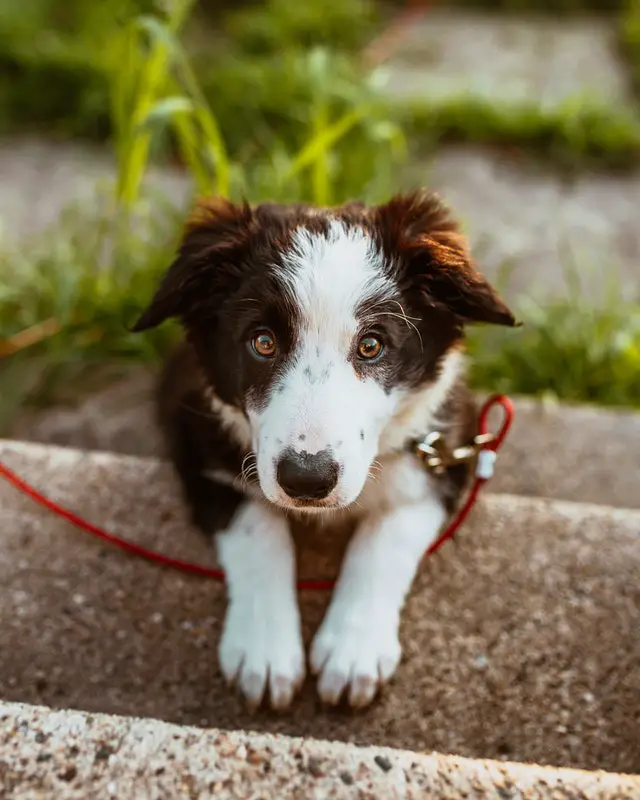Your dog’s ears aren’t just for listening. It turns out that your dog can communicate a bunch to you with their ear positions. Knowing what different ear positions mean will allow you to better read your dog’s non-verbal communication.
Your dog’s ear positions let you know what they’re feeling. A dog will lower their ears or put them back gently if they are feeling submissive, anxious, or fearful. A dog that is relaxed will keep their ears forward and slightly to the side. A dog with tightly pinned ears is a defensive signal, which may mean the dog is about to act to protect themselves.
Dog’s ears are controlled by 18 different muscles. We only have six to control ours. This allows them to do many things with their ears, including using them to communicate feelings.
Keep reading below to learn more about what the different ear positions mean and how learning this will allow you to better interpret what your pooch is feeling or telling you.
What your dog’s ear position means and how to read their signal
There are several different ear positions that can signal different things your dog is feeling or sensing. Some of these can be positive responses and some can be negative. Just as we have positive and negative facial expression, so do dogs. Their feelings are often expressed through their ears.
Below, I will go through each of the different ear positions and how teach you how to identify these positions. It’s also important to know that ear position alone is not the whole picture. I will break down some other non verbal communication that you will want to look for as well.
Additionally, I have included a special tip section to each position what will give you a little more help to understand each scenario.
So let’s jump right in.
Relaxed Ears

Relaxed ears are the best thing to see in your pup. This means their ears are forward and slightly to the side. The are not pricked up. This is signaling that your dog is calm and relaxed. A dog with relaxed ears is feeling pretty chill without a care in the world at this point.
Special Tip: You can use other body language ques to make sure they are relaxed, such as their mouth being slightly open and turning up into an almost smile. Their body should also be relaxed and the eyes soft.
Twitching Ears

If your dog is twitching their ears or switching ear positions like a calibrating satellite then they found a sound that is intriguing. This switching and twitching just means that there is some fun sound that your dog is interested in. You may also see your dog tilt their head back and forth.
Bottom line – your dog is trying to figure out if they like what they are hearing or not.
Special Tip: You only need to be concerned or take action if your dog transitions into a negative ear position. This could mean they are afraid or anxious to the sound.
Attentive Ears

Attentive ears are pricked forward slightly. This is a sign that your dog is engaged in who or what they are playing with. This is a sign of focus and is generally a sign of a dog having fun. You may even see the funny head tilt here as well.
Special Tip: Good signs to see along with this are their mouth being open and relaxed.
Alert/Concerned Ears

Alert or concerned ears are pricked forward and slightly raised. This means that something has caught your dogs attention and they are ready to react. The way to tell the difference between alert/concerned ears and attentive ears is body language. Alert ears will be accompanied by stiff body and tail posture with the weight of their body forward, ready to react.
Special Tip: This is a good sign they are about to react to or chase something. If you have you dog off leash, this is the time you want to interject yourself and gain their focus to keep them from chasing after something or someone.
Lowered/Pinned Ears

Lowered or pinned ears will appear back and tucked against your dog’s head. This is an indication that your dog is feeling submissive, anxious, or fearful.
I know that seems like a wide range of emotion for the same ear position, but their are some differences to pay attention to.
If your dog’s ears are just slightly lowered or back, that is typically a submissive signal. This what your dog does when you pet them or feed them a treat.
An anxious or fearful dog will pin their ears further back than just a slight submissive position. The more anxious or fearful – the further the ears will be back.
Special Tip: Look for other details in body language to tell the different between submissive position and anxiety/fear position. A submissive dog will still appear to have a relaxed body. The more anxious or fearful the dog feels the more they may hunch over or cower.
Flat Pinned Ears
Flat pinned ears will appear plastered to the dog’s head. A good way to think of this is that the dog looks like they are using every muscle to push their ears as low and far back as possible and will be combined with an extremely stiff body posture. This is a defensive signal and is a good indicator that your dog may act aggressively to protect themselves.
Special Tip: Look for other defensive signals such as growling or your dog trying to escape the situation. Also your dog may freeze – meaning their body will be stiff and may even have their hackles up, with their weight forward, and eyes staring. In these cases, allowing space is the best solution.
I was able to find a fantastic PDF from The Marin Human Society on Defensive Aggression signals and progression. This is a great resource for training your own dog or interacting with another dog. You can read it HERE.
Reminder
Again, I want to stress that you have to look at more than just the ear position to get a full picture of what your dog is feeling. Once you can read their ears and their body language together, you will be able to better understand your pup.
And don’t worry. The more you pay attention and try to read your dogs signals, the better you will get at it.
How do I read my dog’s ears if they are big and floppy?
I understand it may be hard to tell what big floppy ears are doing. Especially in breeds such as basset hounds. In these cases it’s best to look at the base of the ear to see what it is doing. Follow the same information above, but focus on the base of the ears as the dog naturally wont be able to maneuver their larger ears as well as a dog with smaller ears.
Conclusion
While we as humans don’t communicate with our ears our canine companions certainly do. In fact, it is a really good indicator as to what your dog is feeling or thinking. It’s like a built in mood ring – except it actually works.
While the ears are certainly telling just by themselves, it is important to make sure you are observing other body language as well. The ears will give you part of the picture, but you have to consider it with other physical or verbal ques from your pup.
Remember this will allow you to better interpret what your dog is feeling and allow you to intercede when needed. I know this has helped me with my dogs. Most of all it has helped when they have been fixated on something and about to chase after it.
Also, it is very easy to think your dog is just ignoring you or choosing not to listen. This may very well be the case, but next time this happens, observe their ears. See if you can spot something going on. Maybe something is freaking your dog out or maybe if you’re yelling your dog may be nervous to respond to your commands.
Related Questions
Your dog can hear sounds roughly four time farther away than humans. Additionally your pooch can actually hear ultrasonic frequencies. To learn more about this, check out my article on the strength of dog’s senses by clicking HERE.


